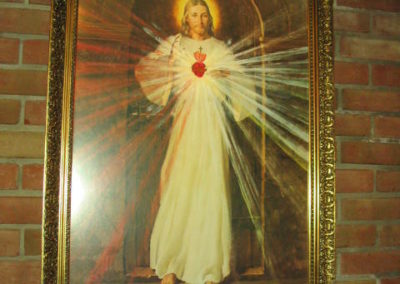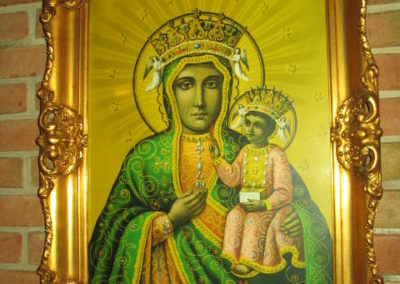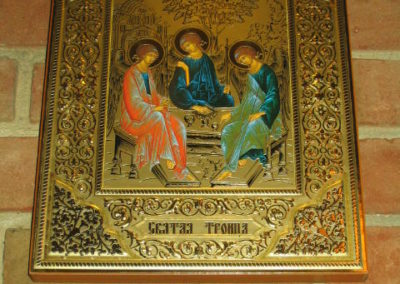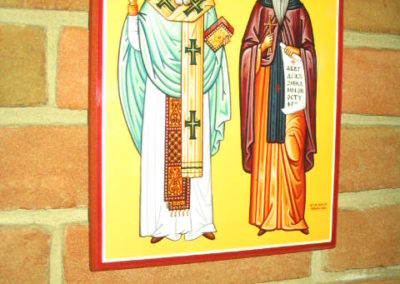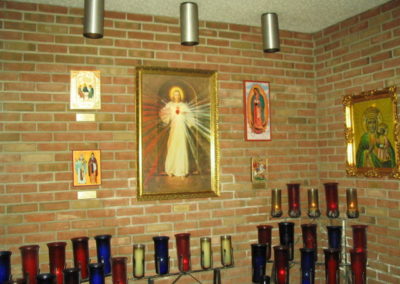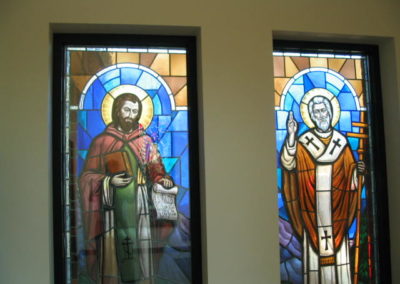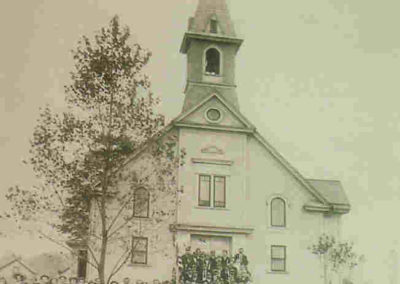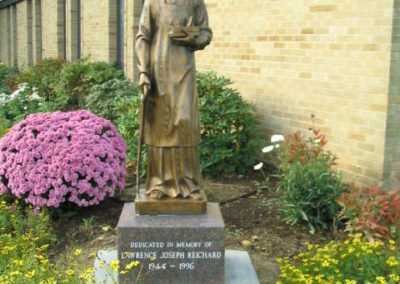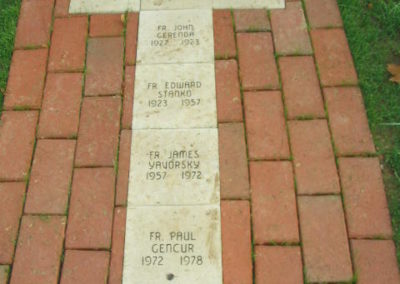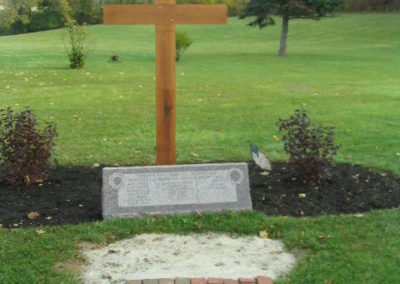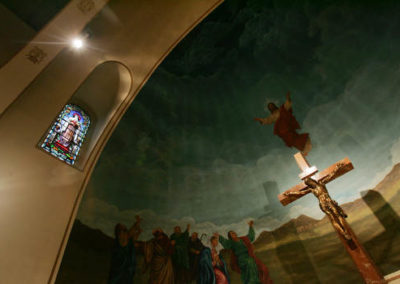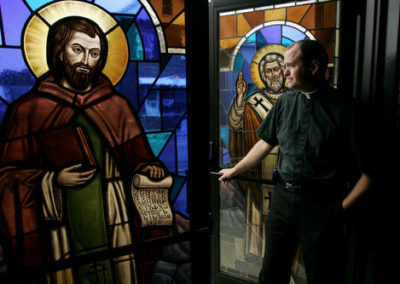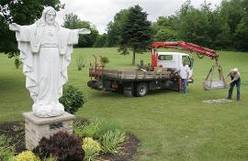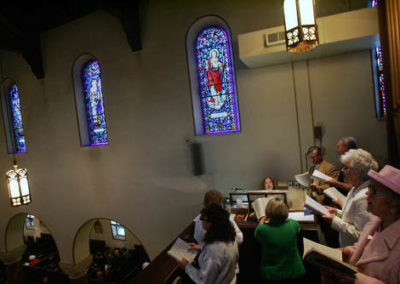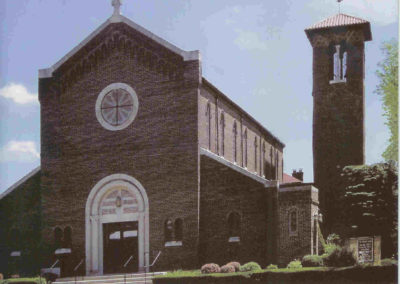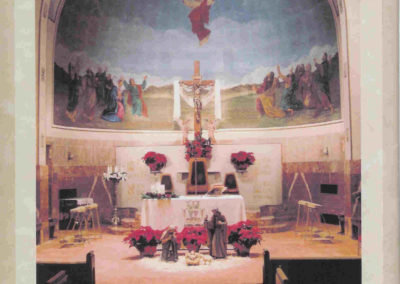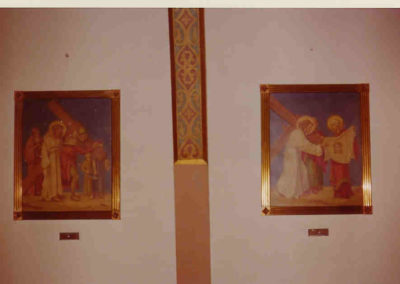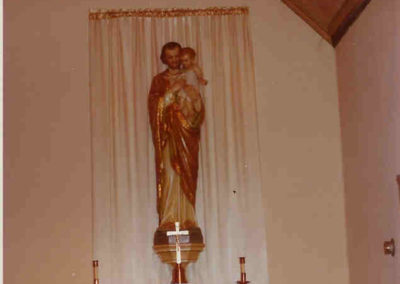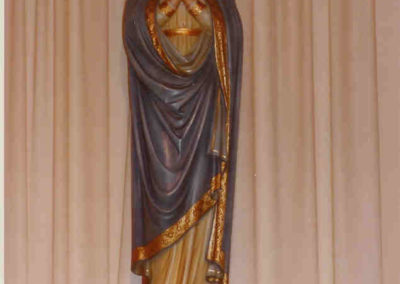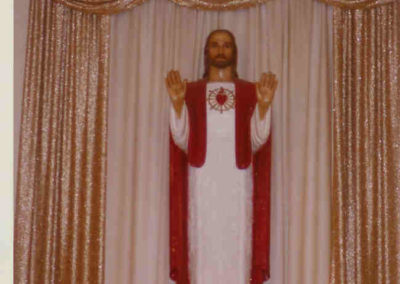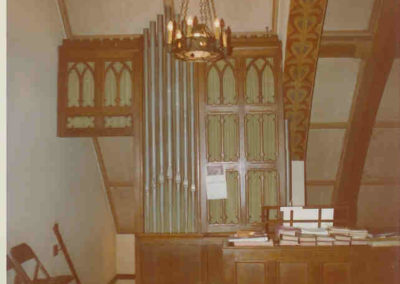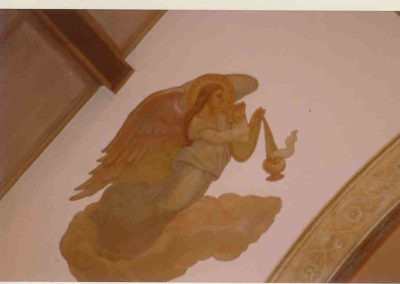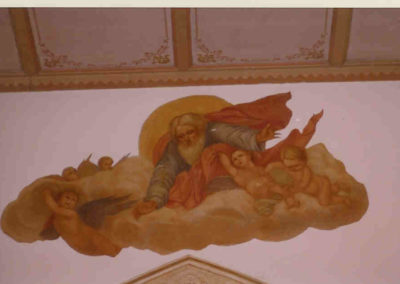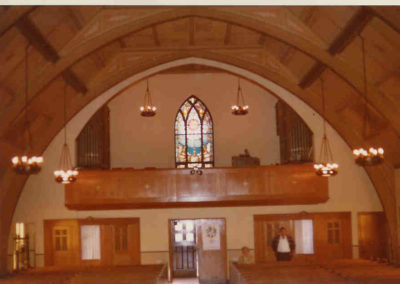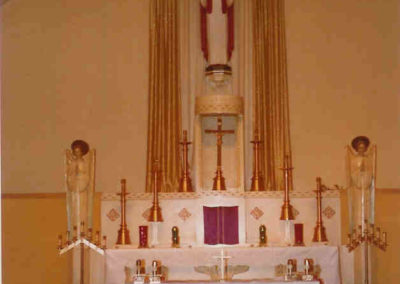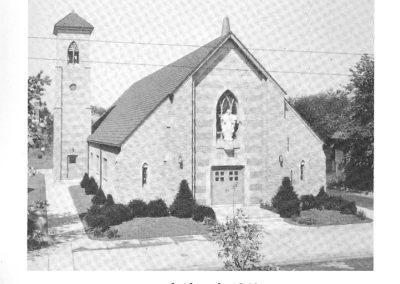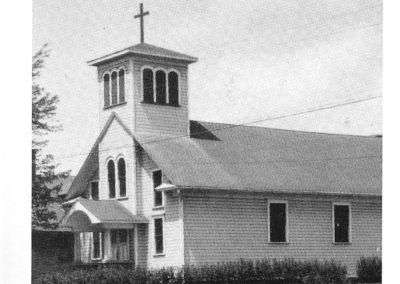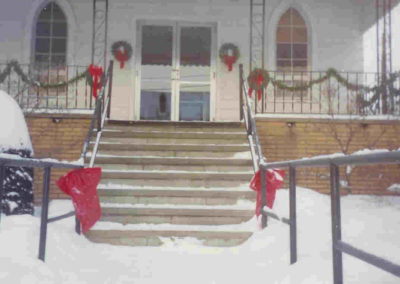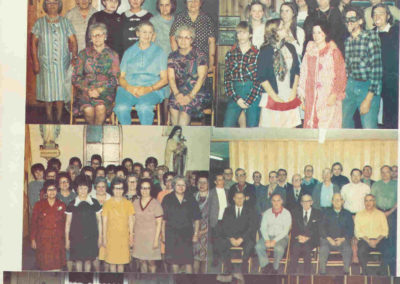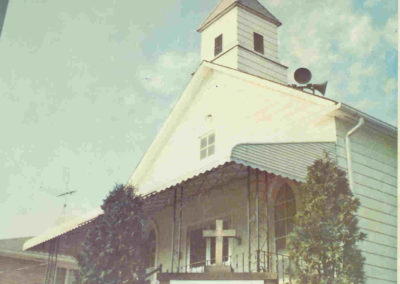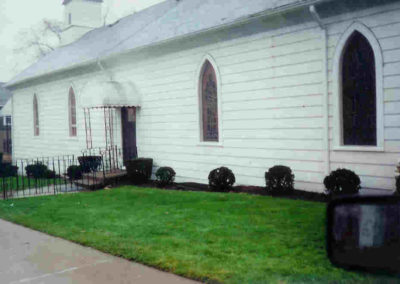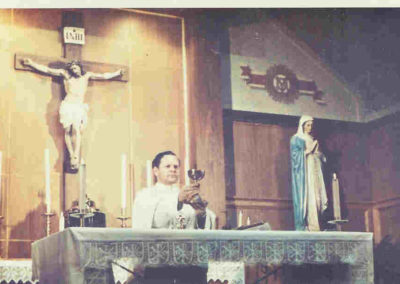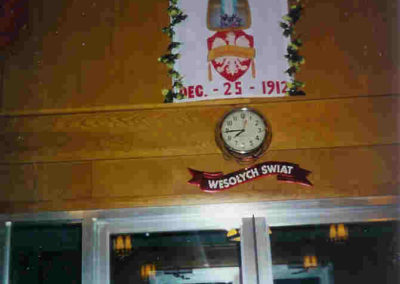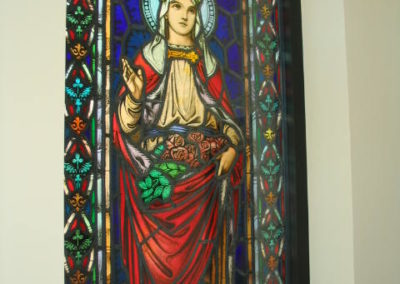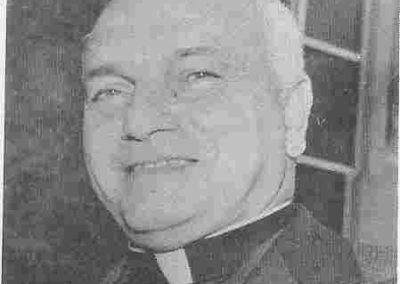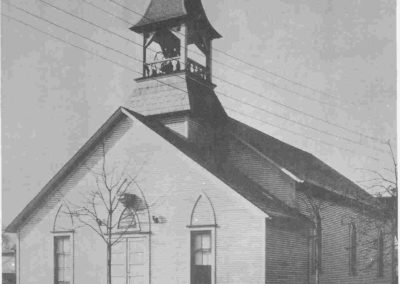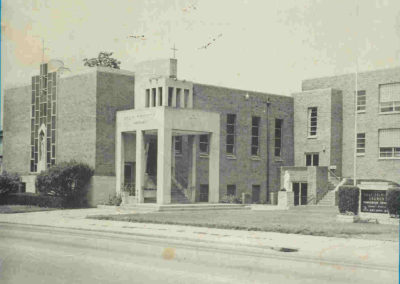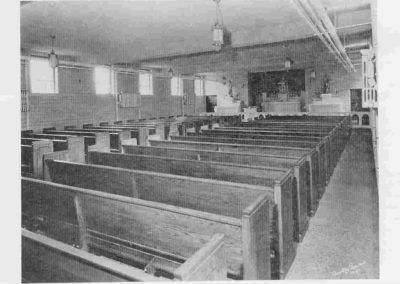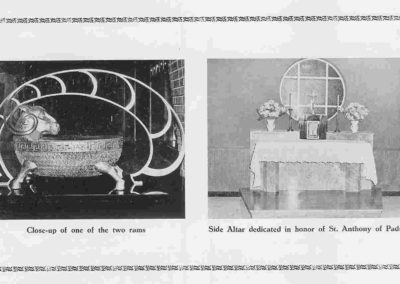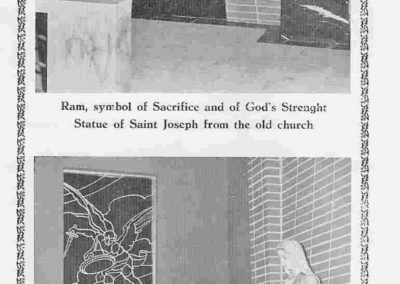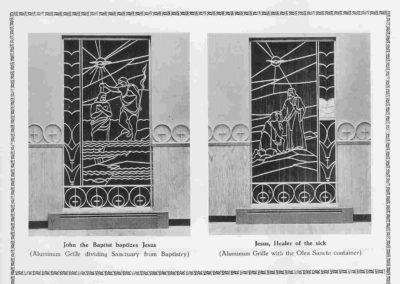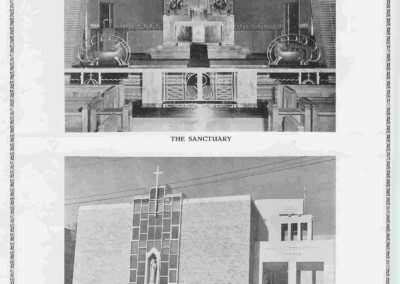Parish History
Prince of Peace parish came into existence with the merging of St. Mary(Polish) and Sacred Heart(Slovenian) parish communities in Barberton after several years of prayerful discussions. Both faith communities recognized that times and circumstances had changed since their founding as ethnic communities, that both shared much in common, and that each would be enriched by the other’s faith, traditions, customs, and gifts.
On July 1, 2002, the two parishes became Prince of Peace Parish Community of Faith and a new era and a new witness to the workings of Divine Providence began.
Father Richard Arko, administrator of both parishes, was appointed pastor by Bishop Anthony Pilla on March 25, 2003 and installed on May 30, 2003 by Bishop Martin Amos.
Father Robert H. Jackson was installed as pastor on Sunday, August 22, 2004 by Bishop Martin Amos.
SS. CYRIL AND METHODIUS (1906-2009)
The Slovak Parish in Barberton, Ss. Cyril and Methodius, celebrated their last Mass on Sunday, June 14, 2009 with Bishop Richard Lennon. A number of their parishioners joined Prince of Peace. A brief history of Ss. Cyril and Methodius can be found below:
Prince of Peace Parish has welcomed many parishioners from Ss. Cyril & Methodius Parish, Barberton since its closing in June 2009. Father Robert Jackson plans to have a section of our Prayer Garden dedicated to Ss. Cyril and Methodius Slovak Parish and it’s history. A number of artifacts will also be at Prince of Peace(e.g. Stations of the Cross, vestments, statues, war memorial, etc.) Below is the history of the parish as found in the Diocese of Cleveland’s 1997 Sesquicentennial Celebration book which contained the history of all the parishes in the Diocese of Cleveland. The pictures are from Ss. Cyril & Methodius’s 2006 Centennial Booklet and a recent Akron Beacon Journal article.
Ss. Cyril and Methodius was founded at the request of Slovak immigrants who came from Cleveland to Barberton seeking employment in the expanding industries of the Barberton area. At that time there was no Catholic Church in the area which served those of Slovak heritage. Bishop Ignatius Horstmann honored the request of these poor immigrants and the Reverend Augustine Tomasek became the first pastor. The first Mass of the parish was held in a dwelling on Melvin Street now known as 16th Street NW. Despite their small numbers and relative poverty, the people made tremendous sacrifices to maintain their parish. Later, three new parishes grew from this nucleus of Slovaks: St. Nicholas Greek Catholic Church, St. Mary Church(Polish), and Sacred Heart Church(Slovenian), all in Barberton.
In 1924, under the pastorate of the Reverend Edward Stanko, a parish school was build and staffed by the Ursuline Sister of Cleveland until 1938. The Vincentian Sisters of Charity of Bedford, Ohio assumed the responsibility for the school until it closed in 1976 due to dwindling enrollment. In 1931 the present church building was erected after much saving and sacrificing on the part of the parishioners despite the fact that it was the height of the Depression which hit industrial communities especially hard. A new school was built in 1955 by Father Stanko as well as a rectory. The Reverend James Yavorsky was pastor from 1957 until 1972. It was under his pastorate that a convent was built for the Sisters and it is presently serving as the parish rectory.
In 1979 a major flood devastated the parish property. As part of the rebuilding process, the Reverend Edward Lajack and the workers of the parish Social Club from 1980-1996 raised funds to completely renovate the church as well. The family spirit which has characterized this small parish community has allowed it to accomplish more than it size or its material resources would warrant.
The parish continued to uphold the religious and social traditions of its Slovak-Catholic founders until closed in June 2009 as a result of the Diocese of Cleveland’s clustering process. The parish’s final Mass with Bishop Richard Lennon was celebrated on Sunday, June 14, 2009.
Pastors
1906-1907: Fr. Augustine Tomasek
1908-1919: Mission Church
1919-1922: Fr. Stephen Kocis
1922-1923: Fr. John Gerenda
1923-1957: Fr. Edward Stanko
1957-1972: Fr. James Yavorsky
1972-1978: Fr. Paul Gencur
1979-2009: Fr. Edward Lajack
HISTORY OF SACRED HEART SLOVENIAN PARISH COMMUNITY 1917-2002
Sacred Heart began with Slovenian Catholics from Barberton and Kenmore forming a committee to establish their own parish. On January 7, 1917, Bishop John Farrelly had given his approval and the parish was named Sacred Heart of Jesus. The first Mass was held on March 21 at Saints Cyril and Methodius Church and then at a rented hall on 15th Street at W. Tuscarawas Avenue.
In February 1922, architectural work began for a church located on the North side of Hopocan Avenue between 15th and 16th Street, N.W. The first Mass, in the new wooden church, was at Midnight on Christmas of 1922. The depression was a trying time as many were unemployed. The church helped by providing food, coal and transportation for children to attend religion classes.
On October 19, 1941, ground breaking began on the new, second, brick church located at the North East corner of Hopocan Avenue and 16th Street(next to the old church). The new church was dedicated on August 9, 1942 and the old church was converted into a hall.
In 1951, eleven acres of land was purchased on Shannon Ave. at 29th St. N.W. A school building was started here in 1959. The school opened in September of 1960, remained open until June, 1971, when it closed. Parishioners volunteered to help in the building of a new rectory on Shannon Avenue which began in 1970. Construction began on the third church on June 6, 1975 and was finished in December. The first Mass was at Midnight on Christmas, 53 years after the first Mass in the first church. The new church was dedicated on June 13, 1976. In the spring of 1979, a picnic pavilion was added to the parish grounds.
Sacred Heart had two native sons of the parish become ordained as priests. Fr. John Kumse was ordained in June of 1979 and Fr. John Valencheck in May of 1998.
Sacred Heart was officially closed on June 30, 2002.
Sacred Heart’s Pastor’s:
1917-1917 Fr. Anton Berk
1918-1919 Fr. Anton Mlinar
1922-1923 Fr. John Stefanic
1923-1923 Fr. Ludwig Virant
1923-1931 Fr. Anthony Bombach
1931-1940 Fr. Joseph Medin
1940-1952 Fr. Matthias Jager
1952-1962 Fr. Joseph Celesnik
1962-1969 Fr. Rudolph Praznik
1969-1991 Fr. Joseph Ozimek
1991-2001 Fr. Albert Kunkel(Emeritus)
2001-2002 Fr. Richard Arko(Administrator)
HISTORY OF ST. MARY POLISH PARISH COMMUNITY 1912-2002
Saint Mary’s, a Polish church was originally named the Church of Immaculate Conception, however, it was literally translated to St. Mary’s. A group of 30 families were willing to start the church. A small wooden church was erected on the east side of 21st Street, N.W. at Columbus Avenue. The first Mass was celebrated on Christmas Day, 1913. A priest was available only on Sunday and for many years the Church was more or less considered a mission church. This was a hard time for the church.
Two lots and a house were purchased in 1921 at the South West corner of 21st Street and Tuscarawas Avenue. Priests were short term, money was short and the hard times continued. In March of 1933, Father Joseph Napierkowski was assigned as pastor. Through his efforts and cooperation on the part of parishioners, the Bishop granted permission to relocate the church to the two lots on the corner at Tuscarawas Avenue. Due to the depression, many of the parishioners were unemployed. They started the relocation task on July 26, 1933. The new church was dedicated in November 1933. This was the site of the church until it’s closing. Work continued on the hall, in the basement and also enlarging of the main altar. In 1935, the debt was paid off.
Saint Mary’s was always a small parish., However, the love of God and the cooperation between various organizations and parishioners shows the dedication of the church and the interest in keeping the parish alive. The hard working parishioners are an example of the power of love and perseverance.
St. Mary’s Church was officially closed on June 30, 200
Saint Mary’s Pastors:
1913-1916: Fr. Bronislaus Salamon
1916-1917: Fr. Stanislaus Jastrzembowski
1917-1918 Fr. Joseph Zielinski
1918-1918 Fr. Joseph Rojewski
1918-1920 Fr. Francis Duda
1920-1922 Fr. John Kubacki
1923-1925 Fr. Paul Michalak
1925-1927 Fr. Joseph Kuta
1927-1928 Fr. Stanislaus Sobieniowski
1928-1929 Fr. Joseph Jarosz
1929-1933 Fr. John Bialek
1933-1948 Fr. Joseph Napierkowski
1948-1954 Fr. Francis Szczepanski
1954-1964 Fr. John Kucia
1965-1966 Fr. Walter Golembiewski
1966-1967 Fr. J. Jarzynski
1967-1971 Fr. Joseph Gorski
1971-1984 Fr. Paul Selle
1984-1994 Fr. Claude Gaebelein
1994-2002 Fr. Richard Arko(Administrator)
HISTORY OF HOLY TRINITY CHURCH
Prince of Peace Parish has welcomed many parishioners from Holy Trinity Hungarian Parish, Barberton. Father Robert Jackson plans to have a section of our Prayer Garden dedicated to Holy Trinity Hungarian Parish and it’s history. Below is the history of the parish as found in the 1997 Sesquicentennial Celebration book which contained the history of all the parishes in the Diocese of Cleveland.
The pictures below are from the December 13, 1959 Booklet “Dedication of the new Holy Trinity Church” and the August 17, 1986 75th Anniversary Booklet. You can click on the picture to make it bigger.
History of Holy Trinity Parish, Barberton, Ohio, 1911-2007
Around 1900—A decade after O.C. Barber, the founder of the Diamond Match Company, settled in the area, the first Hungarian-Catholic families arrived in Barberton, Ohio. John and Catherine Szemon and their children came to Barberton and opened a tavern on Wolf Street, where area workers came to socialize. When a Hungarian priest was in the area, the community also celebrated Mass there. The fledgling Hungarian community soon established a number of mutual aid societies. In 1907, seven Hungarian women, recognizing the potential disaster brought on by illness or injury, established the Saint Elizabeth Sick Aid Society. Two years later, the community organized the Barberton Branch of the Saint Stephen Society—the predecessor of the American Hungarian Catholic Society. These two societies were joined by a third organization, the Saint Joseph Society, in July 1910. At its January 1, 1911 meeting, the Saint Joseph Society proposed purchasing the former German Lutheran church on First Street NW. With the financial assistance of the Saint Elizabeth and Saint Stephen Societies, a seven member delegation from the Saint Joseph Society made an initial payment on the church on January 21, 1911. Eight days later, Barberton’s Hungarian-Catholics met to elect officers of the new church.
Still too small to support a pastor, the community welcomed a number of visiting priests, including Father Oscar Szilagyi, Father Emil Egner, Father Oscar Solymos, and Father Peter Popovich—a Greek-Catholic priest, Father Francis Denes, and Father Nador Pupinsky. Father Denes later returned to Barberton, this time as the first pastor of the newly formed Holy Trinity parish. His pastorate, however, was short lived, as he soon returned to Hungary. Recognizing the commitment of Barberton’s Hungarian-Catholic community, Bishop Joseph Schrembs searched for a second pastor, finally selecting Father Joseph Toth, OFM. Father Toth ministered to the spiritual needs of the community until the spring of 1924, when fellow Franciscan, Father Lawrence Biro from Erdely, Hungary arrived in Barberton. Recognizing the inadequacies of the first Holy Trinity Church, Father Biro turned to his parishioners with proposal for a new church. The next month, the Saint Stephen Society presented the first Hungarian play in Barberton, the first in a series of performances, the proceeds from which were used to establish a building fund for the new church. Father Biro, however did not see the completion of the project being transferred to South Bend, Indiana in April 1927. His successor, Father Athanasius Kovacs, assured the parish he would complete the work begun by Father Biro.
On July 1, 1928, the parish purchased land for the new church and school on Wooster Road North. With the onset of the Great Depression, however, money became scarce and work on the building was postponed until September 1932. By Passion Sunday 1933, the building had progressed sufficiently to allow the parish to celebrate its first Mass in the basement of the church. On May 30, 1933, Auxiliary Bishop James A. McFadden dedicated the new Holy Trinity Church. It was in the basement church that the community endured the trying times of the Great Depression, the Second World War, and the first of the Cold War’s Iron Curtain. After serving the Holy Trinity community for over 25 years, Father Kovacs died of cancer on December 28, 1952.
The parish’s next pastor, Father Nicholas Dengl, OFM, received permission from Archbishop Edward F. Hoban to complete the church. In August 1959 Father Dengl celebrated Mass for the first time in the upper church. That same year, Holy Trinity School opened with three Sisters of the Divine Redeemer from Elizabeth, Pennsylvania and one lay teacher. On December 13, 1959, the new Holy Trinity Church was dedicated. Upon Father Dengl’s 1964 elevation to Custos of the Franciscan Order in Youngstown, Ohio, the parish welcomed a new pastor, Father Baan Vitez, OFM. During Father Vitez’s pastorate, the parish constructed a new brick convent, remodeled the church sanctuary to comply with the reforms of the Second Vatican Council, and installed new stained-glass windows in the front of the church. In 1973, Father Vitez left the parish.
During the pastorate of this successor, Father George Meszaros, OFM, the parish addressed its growing financial problems. On May 30, 1974, Holy Trinity parish was honored with a visit from Cardinal Joseph Mindszeny, advocate for religious and political rights, who had been imprisoned by Hungary’s Communist government. Departing in June 1976, Father Meszaros left the community in the capable hands of Fathers Nicholas Dengl, OFM and Carl Ciprian, OFM, who together worked towards the retirement of the parish dept. During the early 1980’s, the parish welcomed a number of pastors, including Fathers John Domotor, OFM, Father Charles Reuter, OFM, and Father Kalman Miskolczy, OFM. In 1983, Father Ciprian returned to the parish. With its enrollment, dropping, Holy Trinity School closed in June 1986. The parish continued to uphold the religious and social traditions of its Hungarian-Catholic founders until Father Carl Ciprian retired in July 2007. The parish’s final Mass with Bishop Richard Lennon was celebrated on Sunday, September 2, 2007.
Pastors
1924-1927 Fr. Laurence Biro
1927-1952 Fr. Anthansius Kovacs
1953-1964 Fr. Nicholas Dengl
1964-1973 Fr. Baan Vitez
1973-1976 Fr. George Meszaros
1976-1978 Fr. Nicholas Dengl
1978-1980 Fr. Carl Ciprian
1980-1980 Fr. Nicholas Dengl
1980-1982 Fr. Charles Reuter
1982-1983 Fr. Kalman Miskolczy
1983-2007 Fr. Carl Ciprian

